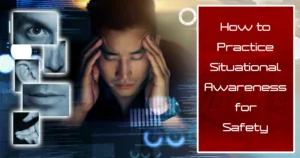Advanced Physical Security Strategies: Crafting a Fortress
In the realm of security, physical measures form the bedrock of protection for both tangible and intangible assets. The evolution of threats in the modern world necessitates an equally dynamic approach to defense. “Advanced Physical Security Strategies” is not just about deterrence and response but encompasses a holistic approach to safeguarding people, property, and data against a spectrum of risks.
1. Comprehensive Risk Assessment: The Foundation
A comprehensive risk assessment forms the bedrock of advanced physical security strategies. It involves a detailed analysis of potential threats, ranging from environmental hazards like floods and earthquakes to human-induced risks such as vandalism, theft, or cyber-attacks. This process should also consider less obvious factors like the risk of internal threats from employees or contractors. The goal is to develop a security plan that is not only reactive but also proactive, predicting potential threats and mitigating them before they occur. Key steps include asset identification, threat and vulnerability analysis, risk determination, and the implementation of tailored security measures.
2. Integrating Cutting-edge Technologies
The adoption of advanced technologies plays a pivotal role in enhancing the security infrastructure. Biometric access controls provide a high level of security by using unique physical characteristics, such as fingerprints or iris scans, to allow access. AI-powered surveillance systems can analyze video footage in real-time, distinguishing between normal activities and potential security threats, such as unauthorized entry or suspicious behavior. Intrusion detection sensors, when integrated with these systems, can trigger immediate alerts to security personnel, enabling quick response to prevent or mitigate security breaches. Additionally, the use of drones for aerial surveillance and robotic guards for patrolling can add an extra layer of security, especially in covering large areas or inaccessible locations.
3. Architectural Security Design
The design of a facility significantly impacts its security posture. Security by design principles should be incorporated from the initial planning stages of any building or infrastructure project. This includes the strategic placement of physical barriers, such as fences, walls, and bollards, to deter unauthorized access. The layout should facilitate natural surveillance, allowing for unobstructed views of the surroundings, making it easier to monitor and detect suspicious activities. The concept of territorial reinforcement through environmental design—using landscaping, signage, and lighting—can create a perceived sense of ownership, further deterring potential intruders.
4. Cyber-Physical Systems Security
In the age of smart buildings and IoT devices, ensuring the security of cyber-physical systems is crucial. These systems bridge the gap between physical security measures and cybersecurity, controlling access doors, surveillance cameras, and other security hardware through software and network interfaces. Protecting these systems involves securing the communication networks they operate on, encrypting data transmissions to prevent interception, and regularly updating system software to protect against vulnerabilities. It also requires a comprehensive approach that considers not just the technological aspects but also the human factors, ensuring that users follow best practices for cybersecurity.
5. Emergency Preparedness and Response
A well-prepared organization is one that can effectively respond to emergencies. This includes having clear evacuation plans, emergency communication systems, and protocols for various scenarios, such as natural disasters, active shooter situations, or technological failures. Regular drills and training ensure that staff are ready to act swiftly and efficiently.
6. Continuous Monitoring and Improvement
Security is an ongoing process that requires continuous monitoring and adaptation. Regular audits, security updates, and feedback loops are essential for identifying gaps and making improvements. Staying informed about emerging threats and advancements in security technology enables organizations to evolve their security measures proactively.
7. Collaboration and Community Engagement
Engaging with local law enforcement, security professionals, and the community can enhance security efforts. Partnerships and information sharing can provide additional insights and resources, contributing to a comprehensive security strategy that benefits from collective expertise and support.
Advanced Physical Security Strategies: Tailored Security Solutions
Implementing advanced physical security strategies is a complex endeavor that benefits from professional insight and expertise. Partnering with security experts who can provide customized solutions, from risk assessment to system integration and training, is crucial for developing an effective security strategy.
Secure Your Organization with Advanced Physical Security Solutions
Elevate your security posture with advanced strategies and expert guidance. Contact us today for a comprehensive assessment and tailored solutions that protect your most valuable assets. Together, we can build a safer, more secure future.
References:
Avigilon. (n.d.). Physical Security: Planning, Measures & Examples + PDF. Retrieved from https://www.avigilon.com
Pelco. (n.d.). What is Physical Security? Policies, Measures & Examples. Retrieved from https://www.pelco.com
Advanced Physical Security Strategies – To Learn More:
Elevate Your Defense: Essential Comprehensive Physical Security Measures in Today’s Era
Business Security Services Phoenix AZ: A Strategic Approach to Safeguarding Your Enterprise





Pingback: Mastering Security Marketing: Insights from UAT’s Stace Dixon